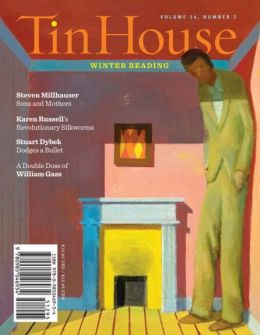A: Kindall Gray
T: “Break Me In and Out”
B: One Story, Issue No.
174, Jan. 23, 2013
Q: This is a study of the
plot formula Gray so expertly employs, what Janet Burroway calls the “story
form as a check mark” (Writing Fiction,
6th edition, 2002, p. 40). There’s a whole level of abstract desire,
excellent dialogue, rendering, and plot complications around secondary characters
in Gray’s story that I haven’t touched on in this brief breakdown of the story
structure.
“Break Me In and Out” by Kindall Gray is a model short story
for several concepts teachers tried to instill in me during my intro to fiction
workshops. First, as my notes to one
workshop have it, “The protagonist’s desires drive the plot.” In the first three pages of Gray’s story we
learn that the narrator has a chance to see her favorite animal, the monitor
lizard and that she has a bike that she likes and a lock that was her only
birthday gift the previous year. The
desire to see the monitor lizard is the main journey the protagonist undertakes
and it’s introduced by the second paragraph. The intensity of the desire is ratcheted up immediately:
she’s been wanting this for over a year, it’s her favorite animal, she knows
everything about them (showing, not telling, that she is somewhat obsessed with
monitor lizards).
The other side to “the character’s desires drive the plot”
is the obstacles that they have to overcome in order to achieve their
desires. The main obstacle introduced in
the first few paragraphs of “Break Me In and Out” is poverty. The other, related obstacle hinted at in the
first section and developed throughout is the negligence of the mother.
Another teacher once said that a story needs a Thing, and
another thing. The Thing in this case is
the desire to see the monitor lizard.
The other thing in Gray’s story is the protagonist’s neighbor,
Edilio. He’s the subplot, if you will,
and he’s introduced on the third page. Gray
does an excellent job of using dialogue and in-scene interaction to demonstrate
the bond between Edilio and the protagonist, but I won’t dwell on that here.
The desire and the obstacles are ratcheted up, until finally
the mother agrees to take the protagonist to see the monitor lizard if she will
give up seeing Edilio. It’s a model
example of merging subplots, on the one hand, and the character having to give
up something meaningful in order to achieve her goal, on the other hand.
Using F. Scott Fitzgerald’s “Babylon Revisited” as an
example, my first fiction instructor once said that it is very effective to
give your character what she desires then take it away. That’s precisely what happens in “Break Me In
and Out.” The mom promises to take the
protagonist and then fails to follow through on her promise.
The ratcheting up of the stakes of seeing the monitor
lizard, the play of desire and obstacles, and tensions in the subplot (which I’m
neglecting) continues for 17 pages. On
page 18, everything is taken away from the protagonist, all is lost, and we
have a model crisis. The mom has
forgotten to take her to see the lizard, her bike and lock have been stolen,
and Edilio is not at home. My first
instructor called this moment, the “all is lost” moment in a story. All is lost indeed.
The story continues for 4 more pages, which are a satisfying
bit of “unknotting” and the character obtains her epiphany (or anti-epiphany, I’m
not sure). The abstract meaning of the
lost objects, and the monitor lizard, are developed. It’s an ending that reminded me of Joyce’s “Araby,”
if that means anything to you. It’s a
model ending.
P is for
Postscript:
There’s an interview with Kindall Gray at
One
Story,
here’s
the link, that’s fascinating to me for two reasons.
The first is that Karen Friedman, the
interviewer, describes the “heart of the story” as Edilio’s journey—I see what
she means, but it’s something I completely neglected in my unpacking of the
plot structure.
It makes me wonder about
the relationship between a “heart of the story” and a story’s structure in
general.
The second is that in response
to a question about the most challenging aspect of writing the story, Gray said
that the “structure was very difficult.
I found it hard to organize the events in the story in a way that
increased tension and suspense but didn’t feel gimmicky.”
I think she succeeded in a model way.
Furthermore, she also ends the interview by
saying that the best bit of writing advice she received was that “plot is only
part of the equation.”
Indeed, and
perhaps not even the equation’s heart.



